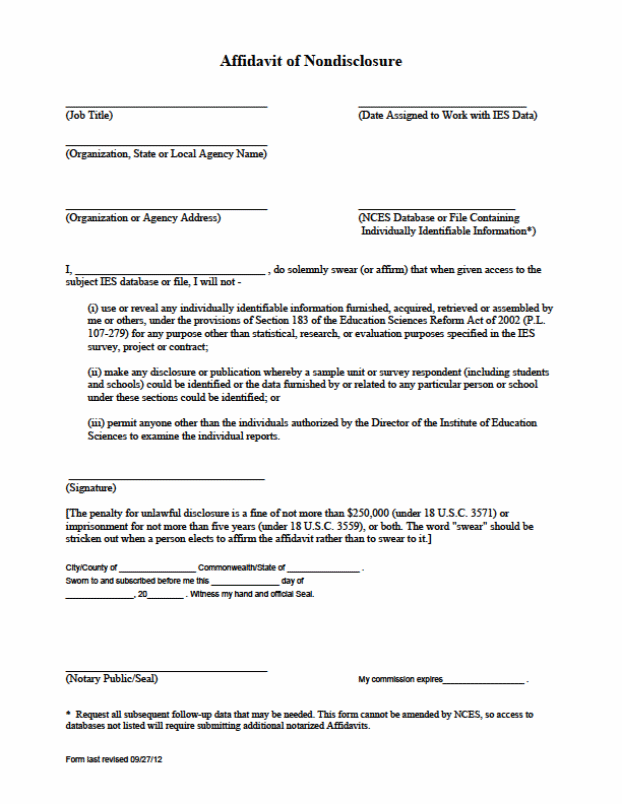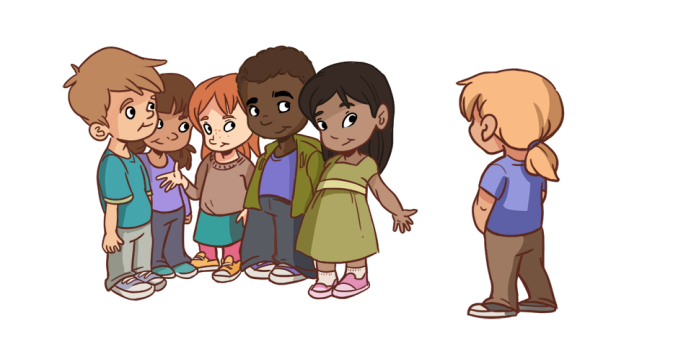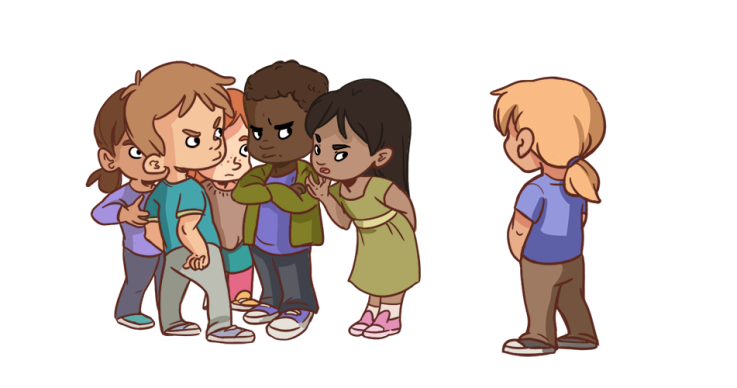International Early Learning Study (IELS 2018) Cognitive Items Trial
NCES Cognitive, Pilot, and Field Test Studies System
Appendix A-D IELS 2018 Items Trial Materials
International Early Learning Study (IELS 2018) Cognitive Items Trial
OMB: 1850-0803
International Early Learning Study (IELS 2018) Cognitive Items Trial
OMB 1850-0803 v.190
National Center for Education Statistics
Institute of Education Sciences
U.S. Department of Education
Washington, D.C.
February 2017
Appendix A: Recruitment phone script
Appendix B: Parent materials
Contents
Parent/Guardian Consent Form 8
International Early Learning Study (IELS) Items Trial Parent Thank You Note 9
Appendix C: Testing Protocol
Appendix A
IELS Items Trial Child Recruitment Phone Script
Design: 400 total screening interviews with parents of five-year-old children Specifications:
|
CHILD’S FIRST NAME:
PARENT’S FIRST NAME (SPOKEN TO / GIVES PERMISSION): _____________________________
DATE RECRUITED: RECRUITED BY:
DATE CONFIRMED: CONFIRMED BY:
ASK TO SPEAK TO THE HEAD OF THE HOUSEHOLD:
Hello, this is from the American Institutes for Research, or AIR. We are conducting a brief, but important study about early education. This is strictly research. Your participation is voluntary, and you will receive no sales pitch or follow-up calls based on your participation. I’d like to tell you a little bit about the study first; is now a good time? (YES or NO and call back later)
We are looking for English-speaking five-year-olds who will be in kindergarten this fall to help us evaluate the usefulness of assessment questions. The assessment questions are being developed for a new international study called the International Early Learning Study, or IELS. The IELS will provide important information on what young children in different countries and learning environments know and can do as they prepare to enter primary school. The IELS is conducting an items trial to determine if the questions we plan to ask make sense to U.S. five-year-olds. The results of this items trial will help developers to modify or delete questions that are not working effectively and ensure that the IELS assessment is valid and fair to all U.S. five-year-olds. The American Institutes for Research (AIR) will be administering the study activities on behalf of the National Center for Education Statistics, NCES for short. I’d like to ask you a few questions to see if your child qualifies for the study.
1. Do you have a child in your household who is between the ages of five and six?
2. How old is this child?
RECORD AGE
(MUST be at least five-years-old but not yet six-years-old OTHERWISE, THANK AND TERMINATE)
3a. Is your child currently attending kindergarten?
-
SELECT ONE
Yes
1
(THANK AND TERMINATE)
No
2
(CONTINUE)
3b. Will your child be attending kindergarten this fall, 2017?
4. We are conducting a study with five-year-olds ………If your child qualifies, do you give permission for us to invite him/her to participate in a 60-minute study session? $50 in cash will be given at the end of the study session to the parent or guardian who brings the child to and from the session to thank them for their time and help. Parking will be validated. Your child will also receive a small gift as our token of appreciation.
-
SELECT ONE
Very Comfortable
4
(CONTINUE)
Somewhat Comfortable
3
Not Too Comfortable
2
(THANK AND TERMINATE)
Not At All Comfortable
1
5. If your child participates in the research study, you must sign a parental consent form. You can sign the form upon arrival at the assessment session, or if someone else will bring your child, you can scan it and email it back. Without a signed form your child cannot participate in the assessment and you cannot receive the honorarium. May I email you a parental consent form if your child chooses to participate?
-
SELECT ONE
Yes
1
(CONTINUE)
No
2
(THANK AND TERMINATE)
The next few questions are so we can ensure we have a diverse group of children in the research study.
6. Is this child currently enrolled in any early education program (for example, preschool, day care, pre‑K, etc)?
-
SELECT ONE
Yes
1
(CONTINUE)
No
2
(Go to Question 9)
Prefer not to answer
3
(Go to Question 9)
7. If this child is enrolled in an early education program, please indicate which one or ones:
-
SELECT ALL THAT APPLY
Family child care home with a preschool program
Child care center
Preschool or nursery school program
Head Start program
Pre-kindergarten program
Transitional Kindergarten (TK) program
1
2
3
4
5
6
Other: please specify ____________
7
8. If this child is enrolled in an early education program, please indicate how many hours per week you child attends as well as how many days per week:
Hours per week _____________ Days per week ___________________
9. What kind of area do you live in? (READ LIST)
10. Is your child Hispanic or Latino? (DO NOT READ)
11. Which of the following categories best describes your child’s ethnic or racial background? (READ LIST)
12. What is the highest degree or level of school any adult in your household has completed?
-
Less than high school diploma
A high school diploma or GED
Some college but no degree
Technical or vocational certification or training
Associate’s degree
Bachelor’s degree
Master’s degree, doctorate degree, or professional degree (JD, MD, DDS, etc.)
13. Which category best fits the total income of all persons in your household over the past 12 months before taxes? Include your own income. Include money from jobs or other earnings, pensions, interest, rent, Social Security payments, child support, and so on.
|
|
|
$0 to $25,000 |
||
$25,001 to $50,000 |
||
$50,001 to $75,000 |
||
$75,001 to $100,00 |
||
$100,001 to $125,000 |
||
More than $125,000 |
15. What is your five-year-old’s name? (RECORD NAME)
16. RECORD GENDER OF STUDENT. DO NOT ASK.
|
|
|
|
|
(TRY TO RECRUIT AN EQUAL NUMBER OF EACH) |
||
|
INVITATION
Your child qualifies to participate in a study session with a researcher at AIR offices in Rockville, Maryland in order to help evaluate the questions compiled for use by the IELS study. The session is scheduled for (INSERT DAY/DATE AND TIME). The session will last approximately 60 minutes. The study session is strictly for research purposes. Let me assure you that no one will attempt to sell or enroll you in anything. $50 in cash will be given to each participating child’s parent or guardian who will bring the child to and from the session. Parking will be validated, and children will receive a small gift as a token of our appreciation.
To participate in the study and receive the $50 your child must have a signed “PARENTAL CONSENT” form. This can be signed upon your arrival at AIR or we can email a form to you and you can scan it and email it back. Please make sure your child brings it with him or her if you are not going to be the person taking him or her to the assessment session.
Appendix B: Parent materials
Parent/Guardian Consent Form
Thank you for agreeing to your child participating in this exciting new study. This study is called the International Early Learning Study, or IELS. The IELS will provide important information on what young children in different countries and learning environments know and can do as they prepare to enter primary school.
As the IELS is a new and groundbreaking study, new assessment questions need to be developed and tested to ensure that those questions accurately measure the knowledge and skills of young children in all countries. Today, your child will participate in an items trial to help us determine if the questions we plan to ask make sense to U.S. five-year-olds. The results of this items trial will help developers to modify or delete questions that are not working effectively and ensure that the IELS assessment is valid and fair to all U.S. five-year-olds.
Your child will be asked to play some educational games on a tablet. They will be asked to do two of the following activities: play with numbers and patterns, hear a story and answer questions about it, play some thinking games, or predict what will happen to different children in every day social situations. Your child is free to skip any question s/he does not want to answer and to stop at any time.
The data provided by your child may be used only for statistical purposes and may not be disclosed, or used, in identifiable form for any other purpose except as required by law (20 U.S.C., § 9573). Children are never identified in any reports. All reported statistics refer to the U.S. as a whole.
Before we can allow your child to join in the IELS items trial, we must have your written consent.
I have read this permission form and understand what my child is being asked to do.
PLEASE SIGN YOUR NAME BELOW:
__________________________________________Date of signature: _______/_______/____________
PLEASE PRINT:
Child’s name: _____________________________________________
Parent name: ______________________________________________
Parent telephone: _________________________________________
Parent email: ______________________________________________
FOR OFFICE USE ONLY:
Student ID: ________________________________________________
International Early Learning Study (IELS) Items Trial Parent Thank You Note
March 2017
Dear Parent,
Thank you for letting your child participate in the items trial of the International Early Learning Study (IELS). We really appreciate the time you both took to help us with our research today, and we really enjoyed working with your child! Without your child’s help, we would not be able to evaluate how well our study questions assess U.S. five-year-olds’ skills and knowledge. Please accept this cash gift of $50 as a token of our appreciation for bringing your child to today’s session and permitting your child to work with our study assessor. Be sure to collect your parking validation sticker before you leave.
If you have any questions or would like to know more information on the study, please feel free to contact Jodi Jacobson Chernoff at [email protected] or 202-403-6524.
Sincerely,
Appendix C: Testing Protocol
Items Trial Script: Welcome, Introduction, and Assent/Consent
As families arrive for the items trial, the following script will be used.
It will not be read word for word, but rather the interviewer should be familiar with its content to conduct the interview in a natural and conversational manner, paraphrasing, or giving further explanation as appropriate. Text written in italics is to be read aloud by the interviewer. Text in <brackets> is generic and should be updated as appropriate.
Part 1. Welcome and Rapport Building. The study administrator should start building rapport with the child as soon as they meet, chatting with them as they walk to the assessment area. The study administrator should introduce him/herself first:
Hello, my name is <name of interviewer> and I work for the American Institutes for Research here in Rockville, Maryland. It’s nice to meet you and thank you very much for coming here to help us out today. We really need your help because we are trying to find out if the questions we have on our tablet make sense and are fun for 5-year-olds.
Create small talk to build rapport with the student by asking a question, such as:
When the child responds, follow up with 2 or 3 questions to get the student used to talking, such as:
If the child is particularly shy, spend more time chatting to be sure they are feeling comfortable. Do not ask about home life or school, as these could be areas of stress. Stick to activities, television shows, games, and complementing clothes.
Part 2. Introduction. Now the study administrator should explain what will happen in the session.
Well I think you’ll enjoy what we are going to be doing today. I am working on a study about children and my friends and I have come up with some questions. We need your help. We need to know if 5 year olds can answer the questions and if the activities are fun. If you agree to help me today, we will give you a tablet to use while you are here. You will
Don’t worry if you’re not sure what the answers are supposed to be. Just give it your best try. We will not be telling your parents or your teachers or anyone how you do. We just want to know if the questions make sense, even if they are hard.
These activities should take about an hour. If you want to take a break or stop for any reason, just let me know at any time.
When we are finished, you can have a sticker set as a gift.
Do you have any questions about what I just said? [Answer any questions the child may ask.]
Part 3. Child Assent.
Do you want to help me today?

Yes Continue with assessment Okay, let’s begin.

No Go to “End assessment script for students that do not assent”
End assessment script for students that do not assent I am sorry you do not want to do these activities with me today, but that’s okay. Thank you very much for talking with me today! End session. Return child to parent. |
Overall paradigm of assessment and sample items
The assessment will be administered on a tablet with audio prompts. The simple narrative will be ‘Let’s spend the day with Mia and Tom’. The first screen of each domain will have Mia and Tom introduce themselves via embedded audio and then invite the child to join them in their day of activities. (Note: the images are static). Each activity contains one of the four domains. Each child will be presented only two domains.
Activity 1
Mia and Tom go to the shops by bus and return home to play (with a supervising adult where appropriate). This will cover the numeracy domain. The item audio can be narrated by both characters reading out alternative item instructions.
Activity 2
Mia and Tom then play a ‘video’ game. This will cover the executive function domain.
Activity 3
Mia and Tom listen to a story about animals on the farm. This will cover the literacy domain.
Activity 4
To be confirmed. The content for the empathy and trust domain is still being developed but we are confident that the narrative is broad enough to be able to incorporate it into an activity a child would do during the day. An example is provided below.
Sample assessment items
Item 1 |
Most flowers |
|
Item 2 |
Same windows |
|
MF rule 1 intro |
|
Score =1 if correct button pressed Score=0 if incorrect button pressed |
MF rule 2 intro |
|
as above |
Language and Literacy
Item 1 |
Mr Cat Helps aural story_ Q3 |
|
Item 2
|
Single word rhyme (hay) |
|
USC_1_stim |
Welcoming group (friendly) Picture: A friendly group of children with one person outside the proximity of the group Voice: Look, you can see a group of children. One child is standing nearby. What do you think? What will happen next?
|
USC_2_stim |
Hostile group Picture: - An unfriendly group of children with one person outside the proximity of the group Voice: Look, you can see a group of children. One child is standing nearby. What do you think? What will happen next?
|
Appendix D: Affidavit of Nondisclosure

| File Type | application/vnd.openxmlformats-officedocument.wordprocessingml.document |
| Author | lmalley |
| File Modified | 0000-00-00 |
| File Created | 2021-01-22 |
© 2025 OMB.report | Privacy Policy



 eedback
eedback

